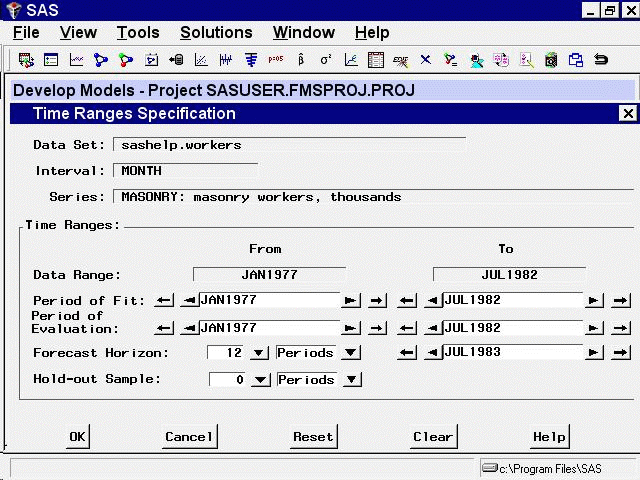Choosing the Best Forecasting Model
Notice the three time ranges shown on the Develop Models window (Figure 49.9). The data range shows the beginning and ending dates of the MASONRY time series. The period of fit shows the beginning and
ending dates of data used to fit the models. The period of evaluation shows the beginning and ending dates of data used to
compute statistics of fit. By default, the fit and evaluate ranges are the same as the data range. To change these ranges,
select the Set Ranges button, or select Options and Time Ranges from the menu bar. This brings up the Time Ranges Specification window, as shown in Figure 49.15.
For this example, suppose the early data in the series is unreliable, and you want to use the range June 1978 to the latest
available for both model fitting and model evaluation. You can either type JUN1978 in the From column for Period of Fit and Period of Evaluation, or you can advance these dates by clicking the right pointing arrows. The outer arrow advances the date by a large amount
(in this case, by a year), and the inner arrow advances it by a single period (in this case, by a month). Once you have changed
the Period of Fit and the Period of Evaluation to JUN1978 in the From column, select the OK button to return to the Develop Models window. Notice that these time ranges are updated at the top of the window, but the models already fit have not been affected.
Your changes to the time ranges affect subsequently fit models.
